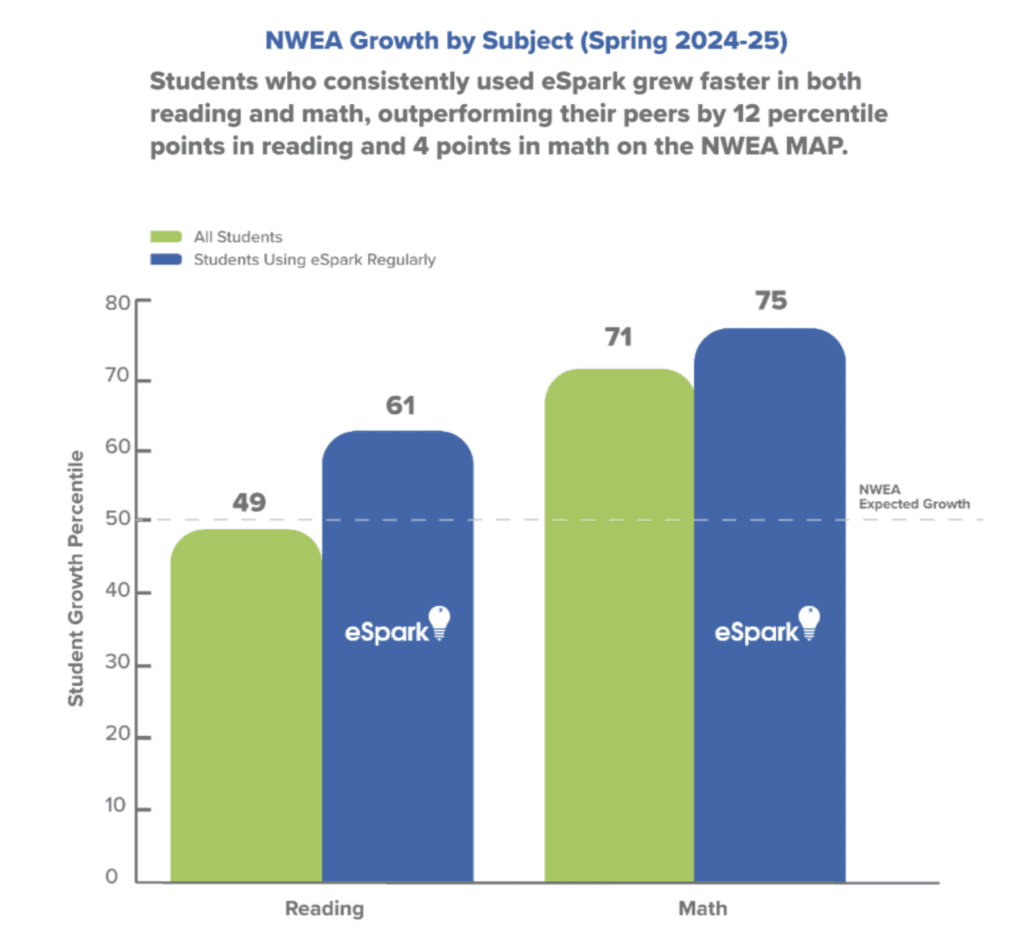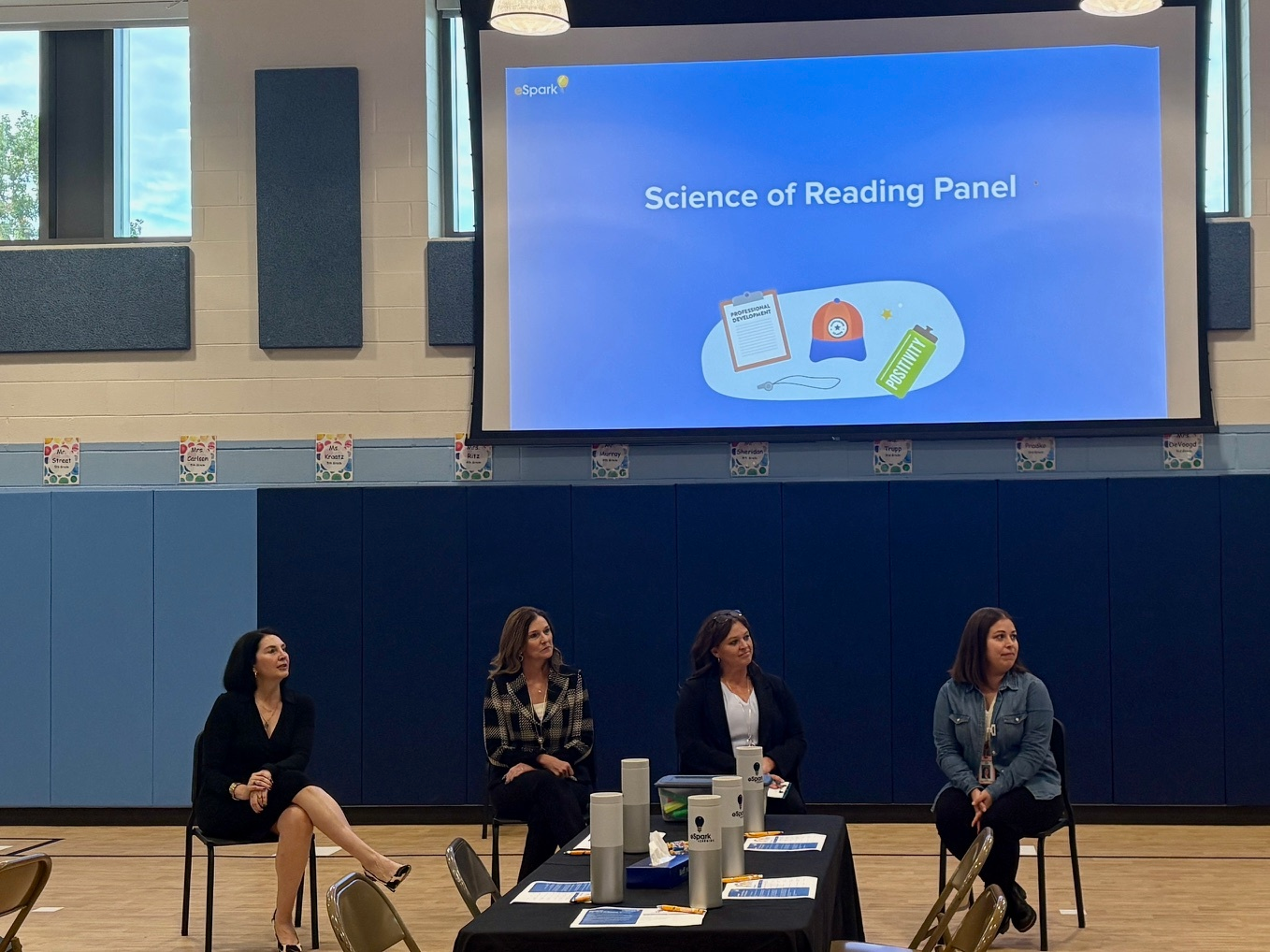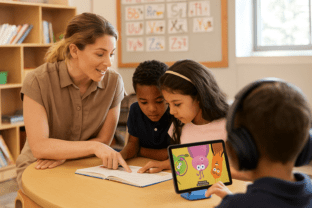By Elizabeth Bercovitz
Director of Customer Success, eSpark Learning
When it comes to advancing the Science of Reading in Michigan, Utica Community Schools is one of many districts leading the way — showing how thoughtful planning, teacher empowerment, and the right tools can turn state literacy priorities into real classroom momentum.
With the passage of Public Acts 146 and 147 of 2024, Michigan districts are required to align early literacy instruction with structured literacy principles, implement universal dyslexia screening, and strengthen Individualized Reading Improvement Plans (IRIPs) for at-risk readers.
These new literacy laws have accelerated momentum across the state, but for many district leaders, the question remains:
How do we move from compliance to meaningful, classroom-level change?
That question was front and center at our Science of Reading Showcase with Utica Community Schools earlier this month. Held at DeKeyser Elementary, the event brought together Michigan superintendents, curriculum directors, principals, and literacy coaches to see how Utica is translating legislation into lasting classroom growth.
From Instruction to Structured Literacy
Utica’s commitment to the Science of Reading began long before the state mandate. The district’s journey reflects years of professional learning and system alignment — including LETRS training for teachers and literacy coaches, alongside an emphasis of ensuring every educator understands the “why” behind evidence-based reading instruction.
Their districtwide goal?
“Tier 1 for all” — where every student, including multilingual learners and students with disabilities, receives structured, high-quality literacy instruction.
For attendees from Hamtramck and other diverse Michigan communities — where as many as 9 in 10 students are multilingual learners — this approach resonates deeply.
As one Utica leader shared during the event,“We wanted a Tier 1 approach that works for every student. eSpark helps us meet students exactly where they are.”
Building Literacy Pathways from NWEA Data
Utica’s approach centers on the smart use of NWEA MAP reading data and eSpark Learning to create individualized, skill-based learning paths for students.
Since 2012, the district has used eSpark to bridge data and instruction — turning assessment insights into engaging, structured literacy practice that students can navigate independently.
Within their differentiated literacy blocks, teachers use eSpark in small-group rotations and independent stations. While the teacher meets with targeted groups, students use eSpark to work on foundational skills like phonics, fluency, and comprehension.
- Teachers appreciate how eSpark translates NWEA results into personalized reading practice aligned with the core literacy curriculum (including CKLA).
- Students are highly engaged — completing “quests” that blend video instruction, songs, and creative challenges.
- Administrators use clear, classroom-friendly dashboards to monitor progress across classrooms and ensure IRIPs reflect meaningful growth.
“During small-group instruction, my students rotate through stations. eSpark is one of their ‘must-dos.’ I know it’s aligned, it’s meaningful, and it keeps them moving forward,” shared one Utica second-grade teacher.
Consistency Without Complexity
Visitors at the Utica Community Schools Science of Reading Showcase saw firsthand how structured literacy can thrive in everyday routines. Students were confident, independent, and deeply engaged during literacy station time — demonstrating what authentic, differentiated instruction looks like in action.
Utica’s philosophy is simple:
“It’s not about time on task — it’s about meaningful completion. Did students accomplish their literacy quest for the day?”
On average, Utica students use eSpark 4–5 times per week, often during 30-minute literacy blocks used for independent practice, teacher-led instruction, and small-group work.
Evidence of Impact: NWEA Growth and Teacher Buy-In
Over more than a decade of partnership, eSpark has become embedded in Utica’s instructional framework.
Each year, the district’s data analysis compares students’ eSpark usage with NWEA MAP reading growth — and the results are consistent:
Students who use eSpark regularly meet or exceed their projected growth rates on NWEA.

For administrators, this connection between structured literacy practice and measurable outcomes validates the district’s investment in both teacher professional learning and student-centered technology.
But perhaps even more powerful than the data is the teacher feedback:
“When we decided not to renew other programs, teachers said, ‘That’s fine — but you can’t take away eSpark.’”
That staying power comes from trust. Teachers know that eSpark saves planning time, reinforces their core instruction, and provides meaningful practice — not busywork.
Coaching, Leadership, and the Literacy Ecosystem
Utica’s success comes from coherence. Literacy coaches, administrators, and teachers are united around the same goal: bringing the Science of Reading into daily instruction in sustainable ways.
- Teachers reinforce structured literacy through eSpark’s adaptive reading and phonics lessons.
- Literacy coaches provide classroom-level support, helping teachers integrate eSpark into small-group and independent work routines.
- Administrators monitor engagement and outcomes through eSpark’s admin dashboard — allowing them to recognize bright spots and guide professional learning where needed.
Even in districts where coaches spend most of their time mentoring rather than intervening, eSpark serves as a bridge between teacher practice, student engagement, and districtwide literacy goals.
“It’s so fun to see students make connections. We’ll be studying prefixes, and a student will say, ‘I learned that in eSpark!’ They come to lessons with prior knowledge and confidence.”
— Utica Elementary Teacher
What Michigan Can Learn from Utica
As Michigan schools implement Public Acts 146 and 147, Utica Community Schools offers a roadmap for success: focus on structured literacy, empower teachers with the right tools, and prioritize student engagement alongside compliance.
The Science of Reading in Michigan is not just about phonics programs or screening mandates — it’s about coherence, culture, and commitment.
Utica’s results show that when core instruction, professional learning, and technology align, students thrive.
For district and building leaders, the takeaway is clear:
Structured literacy doesn’t require starting over. It starts by strengthening what’s already working — and giving teachers the tools to make it stick.
See How Michigan Districts Are Making the Most of Their Core Curriculum
eSpark is proud to partner with Michigan schools and districts using structured literacy to drive measurable growth and build confident, capable readers.
👉 See how eSpark supports Michigan districts »Ready to explore how eSpark can support your district’s Science of Reading implementation?
👉 Explore eSpark packages and pricing »



